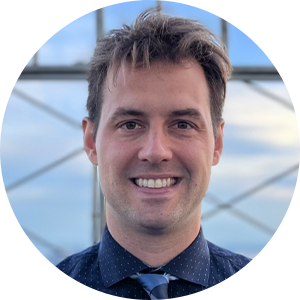More high-school students than ever are reconsidering whether a college education, with record-high tuition costs, is worth the hefty price tag. At the same time, the number of college-aged American adults is plateauing, and inflation is still close to 4%.
It’s created a perfect storm of sorts that’s left many of the country’s higher-ed institutions with some serious reckoning to do. This is especially true for small liberal arts schools, less-selective private schools and even lower-ranked state schools, most of which have seen their enrollment numbers nosedive in recent years.
This crisis comes at a time when schools have simultaneously invested oodles of cash into administrative expenses — think advisors, student services employees and the people who handle the endless paperwork for different accreditations. After all, the institutions need to meet the demand for an all-inclusive student experience by bolstering services in mental health, sports, entertainment, tutoring, career preparation and programs that support diversity, equity and inclusion, among other areas. Schools also need to keep up in the “all-important” U.S. News & World Report rankings.
But with budgets getting tight and many schools across the country facing the real possibility of going out of business, something’s got to give. Interviewed scholars who spoke with Volt believe cutting institutional bloat will be key for a host of American schools to survive in the near future. And AI, one of higher-ed’s most promising new tools, could play a huge role in making that happen.
Out-of-Control Bloating
On average, U.S. universities have only one faculty member per 11 students, according to a report from the Washington D.C.-based Progressive Policy Institute. Those same institutions have one non-faculty employee per four students, a statistic that report author Paul Weinstein Jr. called “absolutely crazy.”
In the PPI report, Weinstein, also a professor at Johns Hopkins University who founded and directs the school’s public management program, found undergraduate headcount will drop by more than 575,000 students, or 15%, during the next five years. It’s forcing universities into a decision they’ve seldom had to face before: streamlining their workforce.
“A lot of schools have gone way too far with their administrative hiring and now can’t figure out what to do,” Weinstein said. “We’ve hit a saturation point, and a lot of these smaller schools have to take action if they want to survive.”

Weinstein believes some of the most unnecessary services that schools offer come in career services and advising. With a few exceptions like law school and finance, most careers don’t have clear paths coming out of school, he said.
“Students don’t get jobs through their university career service departments,” he said. “They’re glorified resume editors that teach interviewing skills. It’s a lot of resources you could get for free or at least less money elsewhere if you didn’t go through your school.”
That’s where AI comes in. The technology, Weinstein says, has “the potential to help reduce costs in a number of ways, in any industry.”
He pointed to advising as a potential area where AI could quickly help cut hundreds of thousands of dollars each year from schools’ bottom lines. Instead of using faculty and advisors to answer basic questions in departments such as career services and registration — even within classes for course-related questions — an AI chatbot could handle an infinite amount of questions from an infinite number of students. That, in turn, could free faculty and advisors to answer more in-depth and personalized student questions, he said.
“You’re already seeing companies doing this. Like, if I have a question when paying my electric bill, a little box saying ‘how can I help you today’ appears on the right side of the website, and it has preset answers to like 50 questions,” said Weinstein. “If there’s something super-specific to my account that the chatbot can’t answer, it’ll give me a phone number to call or connect me to a representative right there in the chat.”
Philip Hamburger, a professor at Columbia Law School and frequent Wall Street Journal columnist who first sounded the alarm on administrative bloat back in 2019, agreed with Weinstein’s assessment.
“AI undoubtedly can help cut costs, and that may be especially important for academic institutions because most are congenitally reluctant to make difficult personnel decisions,” Hamburger said in an email.
AI in action at Emory
At least one leading U.S. university is already reaping the benefits of AI in managing institutional bloat. In 2021, Emory began rolling out a school-wide chatbot for students to ask questions covering anything from financial aid and registering for classes to course-specific homework problems and selecting a major.

Emora Chat doesn’t give the answers to homework or definitively tell a student which major to pick, according to a longtime computer science professor at the school. But the AI chatbot has simplified student advising while freeing up staff and faculty to make the most of their respective areas of expertise.
“Emora Chat has been incredibly effective for things like office hours,” explained Vaidy Sunderam, professor and chair of Emory’s Computer Science department. “It conducts one-on-one tutorials and even helps in grading. Instead of just giving a letter grade or number out of 100, the AI helps show students where they went wrong in certain parts of the process.”
Sunderam emphasized that, although human staffers are not scalable, Emora Chat is always available and it’s capable of interacting with each of the school’s 16,000 students at once. The highly selective Atlanta-based university has not made any layoffs since debuting Emora Chat. But it hasn’t added to its institutional bloat during the past two years, either, thanks to the AI bot’s early returns.
For the computer science department, Emora Chat gives hints to students stuck on certain homework problems without explicitly solving the problems. Sunderam said the AI bot, unlike professors and faculty, can instantly discover where students are in the coding process and offer immediate help.
Emory hopes to have Emora Chat more fully involved in grant management, advising and transcripts over the next couple years. By 2025, the technology should be “as qualified and mature as a human being,” Sunderam said.
“AI makes many, many basic university administrative functions more effective and oftentimes more accurate,” said Sunderam. “That’s where we’re going with this.”







